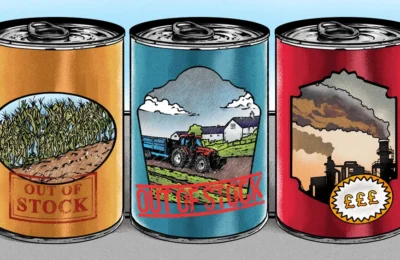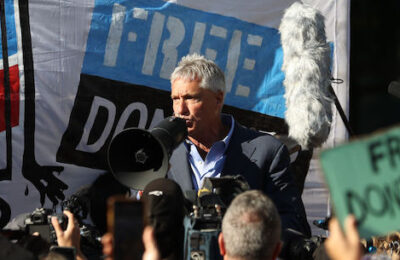From The Guardian
Only one cooling center remains open all night, when the concrete radiates heat stored during hellish daytime hours
Even after the sun sinks below the horizon in Phoenix, Arizona, the concrete cityscape continues to cook. In the midst of a record-breaking heatwave that’s kept daily highs above 110F (43.3C) for a record 19 consecutive days, the evening hours have offered little reprieve. For more than a week, low temperatures breached 90F (32.2C), breaking a grim record recently set in 2020.
While the city is considered a leader in mitigating the dangers of extreme heat and has worked to secure widespread access to cooling centers and hydration stations during the scorching summer days, most facilities here close before nightfall. There’s only a single center that operates around the clock in a city of more than 1.6 million people, even as dangerous conditions grow more deadly – especially for those who can’t access overnight relief.
In a place where functioning air conditioning can save lives, critics are now questioning why more hasn’t been done to keep these essential facilities open late in a city that on Tuesday set a new record of 19 consecutive days of temperatures at or higher than 110F (43.3C).
“Heat is an insidious silent killer,” says Stacey Champion, a community advocate who has been pushing for better protections for the most vulnerable in the city she’s called home for the past 16 years. Champion, who also runs her own PR firm, has dedicated her career to “keeping people alive”, she says, working to ensure more utility companies couldn’t cut power during blistering summers and that more trees are planted in areas where shade is sparse.
But after years of raising the alarm on the lack of options for those left to grapple with rising night-time temperatures, she’s grown increasingly frustrated. “This is not a today problem,” she says, “we have seen it coming.”
Set against the arid desert landscapes of the American south-west, the Phoenix region has always been hot. But the climate crisis has turned the dial – with temperatures only expected to spike further in the coming years – and cities like Phoenix are struggling to keep pace. Nights are getting hotter more quickly than days are across the US, according to the 2018 National Climate Assessment, especially in concrete-covered cities where heat is absorbed and emitted by streets and sidewalks that stay scorching at all hours.
Meanwhile, the number of heat-related deaths has risen sharply in recent years, and a record 425 fatalities were linked to the issue last year. Heat, one of the most deadly types of disasters, is also markedly inequitable in its impact. Just over half of those fatalities were among unhoused residents. For those who died inside, all were in uncooled environments. Close to 80% of deaths occurred in spaces that had nonfunctioning air-conditioning units. The county’s statistics also show that disparities run along racial lines.
“We know the public health risks increase exponentially with temperature,” David Hondula, the director of Phoenix’s office of heat response and mitigation, told local news crews with WSAZ. “Every additional degree we add to the forecast becomes all the more dangerous.”
Hondula added that the city is trying to find ways to keep more facilities open later, acknowledging the significant gaps that remain. “The regional heat relief network largely sees a drop in capacity at the end of business hours,” he said. “And we know that heat continues afterwards.”

In Maricopa county, where Phoenix is located, local non-profits, businesses and agencies can volunteer their facilities as refuges during the warm season, which stretches from May to September. But across the 225 organizations participating in the so-called Heat Relief Network, most don’t often have the staff to keep their doors open after normal business hours.
“It is a very big ask for a lot of people to be involved at all – let alone longer hours,” said Cleo Warner, human services planner for the Maricopa association of governments. “I imagine people are joining in the community because they believe in the cause and they want to be part of the effort in keeping the community safe, but it is a ton of added work for a lot of these sites.”
Across the city, there are 80 locations that operate until 7pm for at least one day a week, according to the Maricopa association of governments, which runs the network. But by 8pm, the number drops to just 18 sites. Furthermore, the city’s transportation program, which provides free Lyft rides to residents who call 2-1-1, stops operating at 5pm each day.
“There is a certain extent to where your local resources are maxed out,” Warner said. She added that she expects the focus of planning and debriefing after this season will center on keeping cooling centers open later, “considering the extreme need we are facing this season”.



